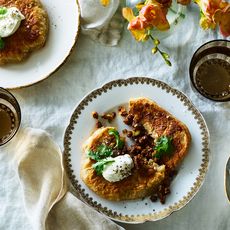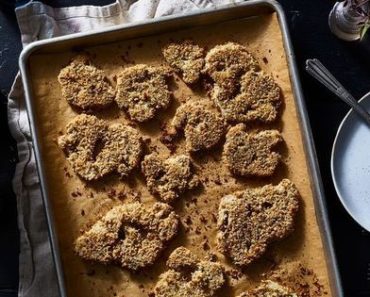Every Ramadan, I find a deep sense of comfort in the pre-dawn hustle of the kitchen, during which we prepared for the roza (fast). Though this is a month of abstinence, food is central to Ramadan (or, as we call it in Urdu, Ramazan). Preparation begins a few weeks in advance, when we stock up on not-easily-perishable goods like gram flour, sago pearls, whole-wheat flour, and jaggery. Closer to the holiday, we purchased the fresh produce, most importantly, energy-promoting ingredients like fatty lamb and full-fat Buffalo’s milk yogurt, which find their way into the sehri (daybreak meal) every morning during the 30 days of fasting.
Unlike many families in the Indian subcontinent, my family did not have a hired cook, so my mother cooked all the meals at home. As a result, I learned Pakistani home cooking by osmosis. I enjoyed cooking with her on most days, but on Ramadan, I savored every moment. This was the occasion for which she delved deep into the pantry and cooked dishes like kalay chanay (black chickpeas), sagodana kheer (sago pearl milk pudding), samosas (filled pastries), spicy coriander scrambled eggs, andkeema paratha (spicy flatbreads filled with minced meat)—stuff I’d been craving all year.

by Sumayya Usmani
It took a lot for me to get out of bed when I was young, especially because my idea of breakfast was a glass of milk and a tea biscuit. I couldn’t stomach the idea of being up at that unearthly, pre-dawn hour. And yet, when 4 a.m. struck, I had no issue waking to the heady aroma of ghee. The chatter between my mother and grandmother was its own special alarm clock. Even though my mother did not fast due to health reasons, she made sure she was up before my father and me, making us the heavy breakfasts that would keep us full until nightfall.
My parents told me that these specific foods were crucial to the fast. The yogurt and sago pearl pudding would keep me hydrated, and the jaggery (unrefined sugar) would give me a boost of energy. Parathas made with whole-wheat flour offer slow-releasing carbohydrates to keep one going through the daylong fast. And, when stuffed with keema, they are not only delicious but decadent, even without accompaniment.

by Carmen Ladipo
For the parathas, we used the spicy leftover minced meat we prepared the night before. Once I got into the rhythm of waking up early (it took a few days), I measured the flour, kneaded it until it transformed into soft dough, rolled tennis ball-sized pieces out into small parcels, and filled them with the meat before rolling them out again, making sure that the filling didn’t ooze out. Those moments of cooking with my mother were their own kind of religious ritual. We had unbroken time to chat, catch up on gossip, trade personal secrets, and laugh, all while we almost mechanically churning out one perfectly-filled paratha after another. We cooked them on the flat tawa (cast-iron griddle) and drizzled unrestricted amounts of homemade ghee around the sides, sneaking piping hot bites of dough here and there.
And once all the food was ready, my father and grandmother joined us. We contemplated the challenges of hunger and thirst that we’d soon face. But being there together, rejoicing all the things we had right then and there, sustained me in a much deeper way. Somehow the daylong fast did not feel daunting, because the contemplation involved and the shared experience made it a special time for all of us.
I live in Scotland now, far removed from the Ramadan rituals I practiced in Pakistan. It is a little difficult to maintain the same level of enthusiasm without my mother next to me, but I still want to pass on my culture to my nine-year-old daughter, who has never lived in Pakistan. Cooking food together is the most effective way of doing so. She, too, loves making keema paratha. We wake up early and roll out one paratha after the other, and I tell her about the memories I had doing the same thing with my mother while we make our own. I hope this morning meal—and waking up that early to make it happen—will be as special for Ayaana as it is for me.
For the filling:
-
2
tablespoons vegetable oil -
1
small red onion, finely chopped -
1
teaspoon grated ginger -
1
teaspoon crushed garlic -
2
tablespoons fresh cilantro leaves, chopped finely -
1/2
inch cinnamon stick -
1
star anise -
1
teaspoon cumin seeds, dry roasted and ground -
1/2
teaspoon cayenne pepper -
1
pinch salt, to taste -
1
tablespoon tomato puree -
1 1/2
cups ground beef -
1
small hot green chile, thinly sliced -
6
or 7 mint leaves, chopped finely -
1
tablespoon dill leaves, chopped finely
For the paratha dough:
-
2
cups all-purpose flour -
1/2
cup whole-wheat flour -
1/2
teaspoon sea salt -
2
tablespoons oil or ghee, for frying -
1
handful flour, for dusting
What do you like to cook for the morning before a day of fasting? Let us know in the comments.
(via Food52)








